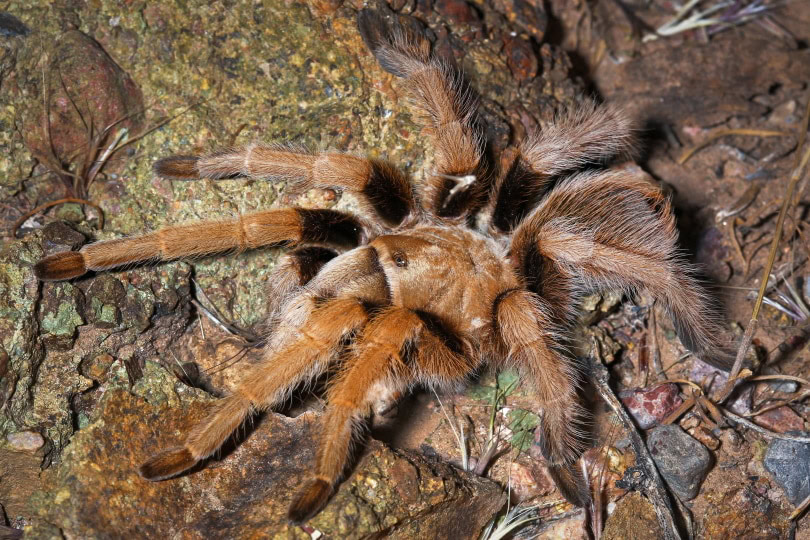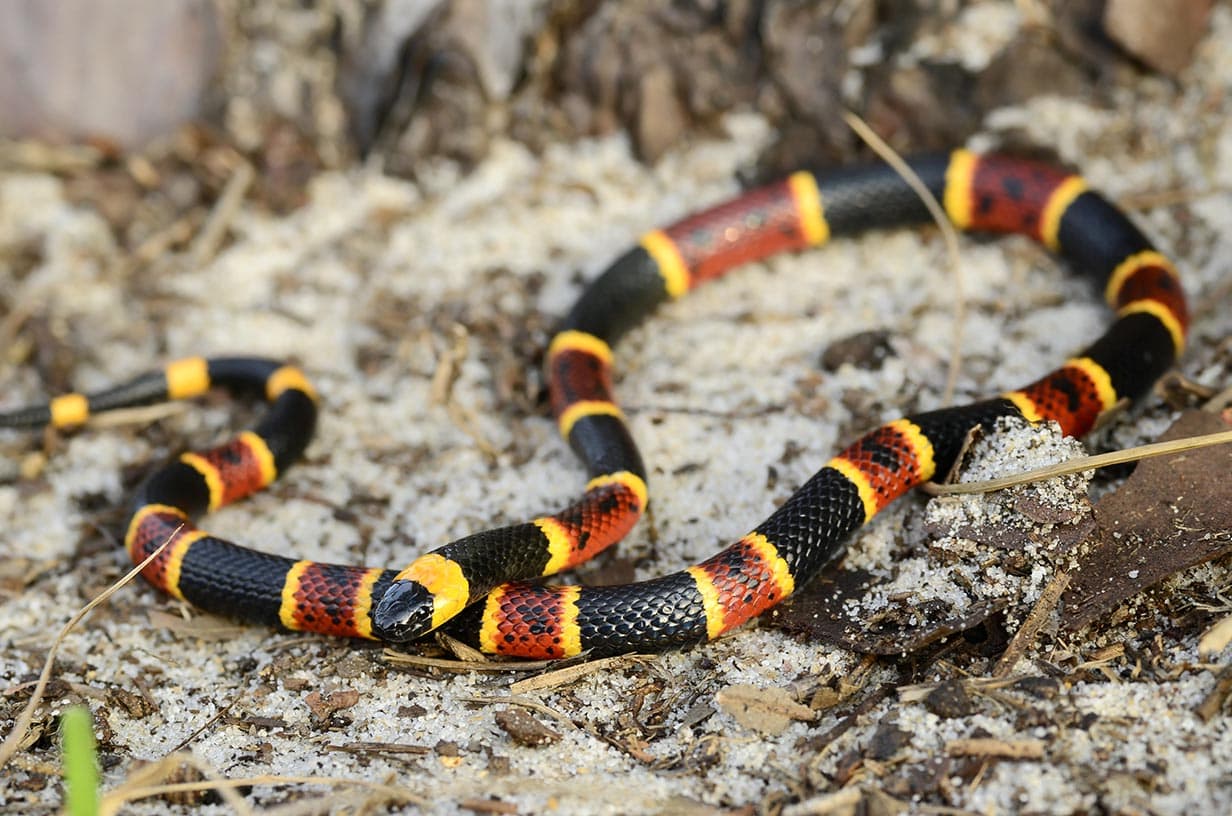Click to Skip Ahead
The Arizona blonde desert tarantula is a cute and fuzzy giant spider that could be your next pet! It is native to southern Arizona and northern Mexico, with 3–4-inch-long legs and a laidback attitude. It grows slowly, taking years to mature into an adult. You will have to keep its lifespan in mind before deciding to purchase, as the females can live for up to 30 years.

Quick Facts About Arizona Blonde Desert Tarantula
| Species Name: | Aphonopelma chalcodes |
| Family: | Theraphosidae |
| Care Level: | Low |
| Temperature: | 75 to 85 degrees Fahrenheit |
| Temperament: | Solitary |
| Color Form: | Female: tan; male: black legs with red abdomen |
| Lifespan: | Female: 24–30 years, male: 5–10 years |
| Size: | 5 to 6 inches |
| Diet: | Crickets |
| Minimum Tank Size: | 5 gallons |
| Tank Set-Up: | Non-wire, secure lid with 3 inches of substrate and a small shelter |
| Compatibility: | Low |
Arizona Blonde Desert Tarantula Overview
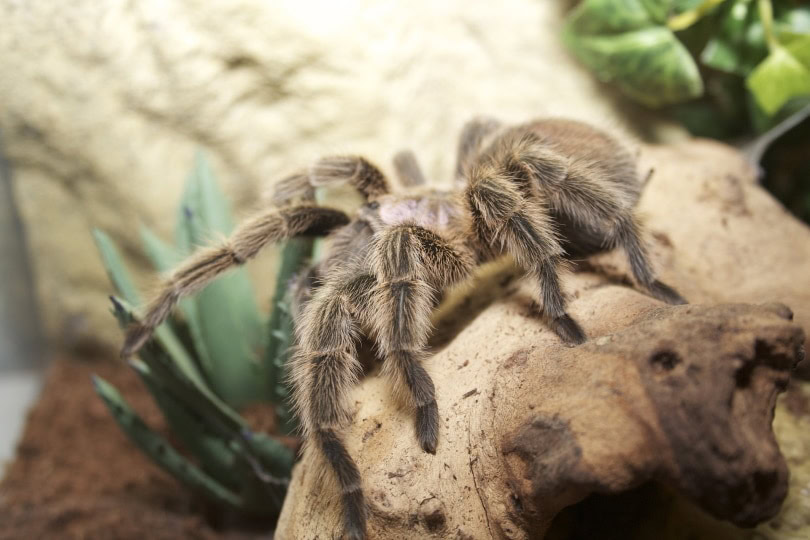
As only one of 900 species of tarantula, the Arizona blonde desert tarantula, also known as the western desert tarantula or Mexican blonde tarantula, is a great beginner option for someone who has never owned this type of spider before. They are creatures that don’t mind a small amount of handling but mostly want to be left alone. Once you set them up with the proper habitat and feed them their recommended cricket diet, they will be happy and could live for a long time.
Arizona Blondes are distinct with the blonde-colored fur that covers their body and legs. Just like all tarantulas, they have eight legs with two claw-like pedipalps. These help them catch their food and eat it.
Even though tarantulas are not known to get aggressive often, these giant spiders should not be handled much at all, especially not by small children. The cutoff age for tarantula handling is age 10. Take comfort, though, in the fact that tarantula stings do not hurt much more than a bee sting.
How Much Do Arizona Blonde Desert Tarantulas Cost?
Depending on how many you buy, one Arizona blonde tarantula will cost around $50. Some stores will lower the price by 10% to 25% if you buy more, with essentially no cap on how many you can buy.

Typical Behavior & Temperament
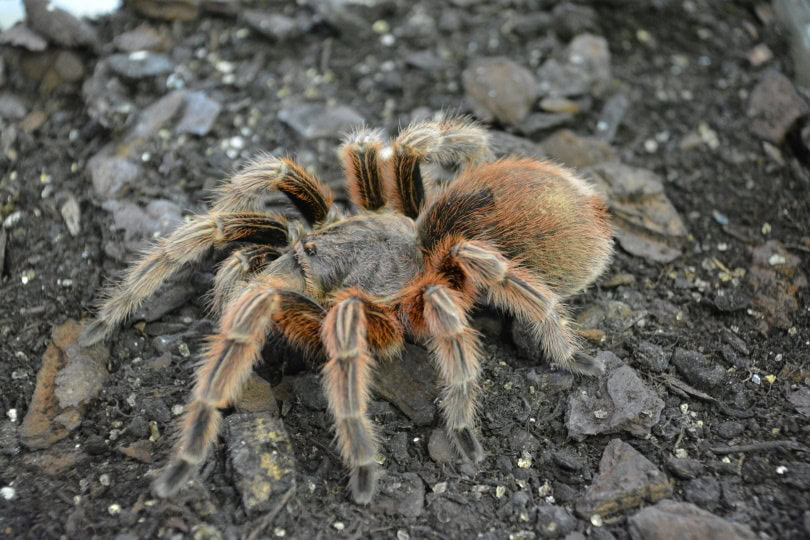
How people typically think of tarantulas is more the stuff of legend than how it actually is in real life. Tarantulas only attack when provoked, and even when they do, it is not serious for humans. The venom from a tarantula is only mildly irritating unless you happen to be allergic to it. Still, tarantulas should not be handled frequently.
If you do want to handle it, test your Arizona blonde’s mood first. You can do this by taking a small paintbrush or straw and gently touching the tarantula. If it reacts well, you are probably safe to pick it up.
Arizona blondes are burrowing tarantulas, so you will often see them digging around in their habitat. In their natural environment, they can dig tunnels that are as wide as 2 inches in diameter and can be quite long. Don’t expect to see them much during the day, as most of their digging and climbing activities happen in the evening.
Appearance & Varieties
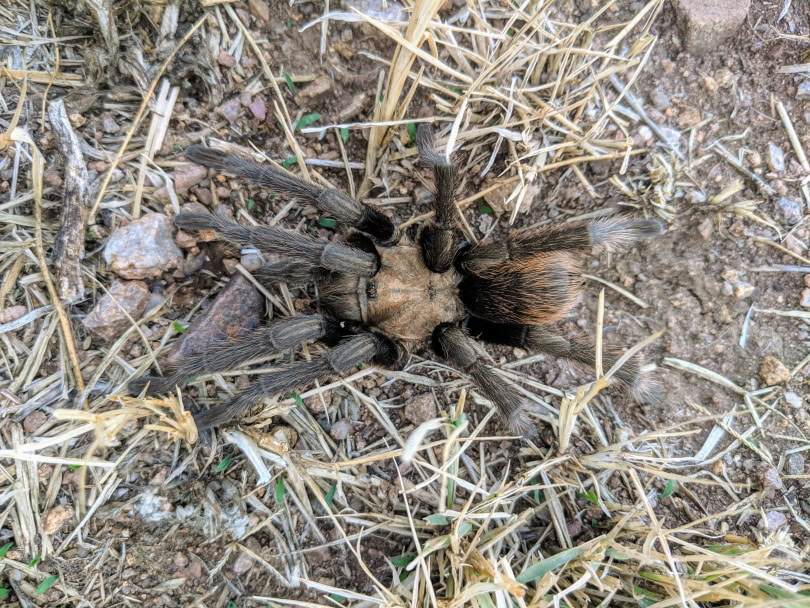
Arizona blonde tarantulas mostly come in two varieties, one that’s specific tjo females and one that’s specific for males. Each can grow up to 6 inches long.
Females are around 2 inches in body length and covered in blonde hairs. They are mostly blonde on the bottom half of their legs and the top part of their bodies, near their heads.
Males are slightly smaller, just under 2 inches, with fewer blonde hairs. In fact, their legs are mostly blackish-brown with a red-colored lower half of the body and a light brown-colored upper half of the body.

How to Take Care of Arizona Blonde Desert Tarantula
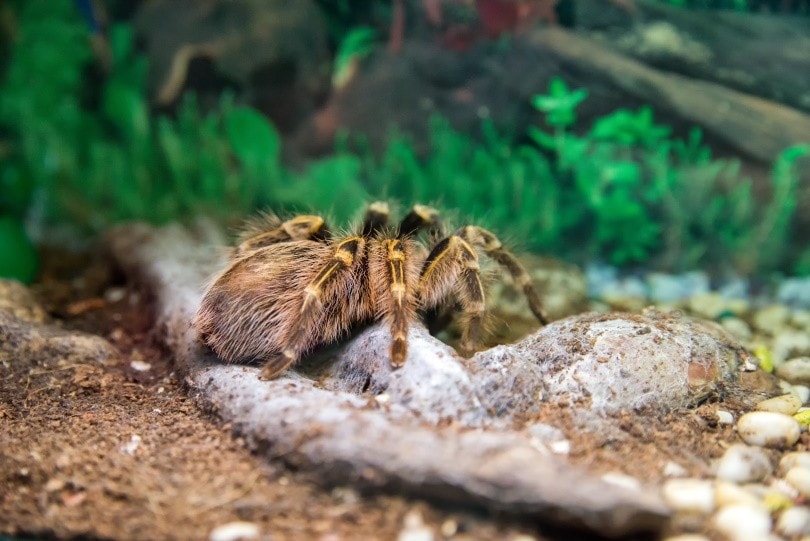
Habitat, Tank Conditions & Setup
Tank
These tarantulas need a tank that is around 5 to 10 gallons. The general rule of thumb is to have your tarantula habitat be at least three times as long as its leg span. A locking lid that is not made of mesh is essential, as moving lids can cause damage to tarantulas, and they can easily get their legs stuck in a mesh lid.
You should place a 3½-inch tall “hide” or shelter in your tank. You can buy one or cut a hole through a small flower pot turned upside-down.
Substrate
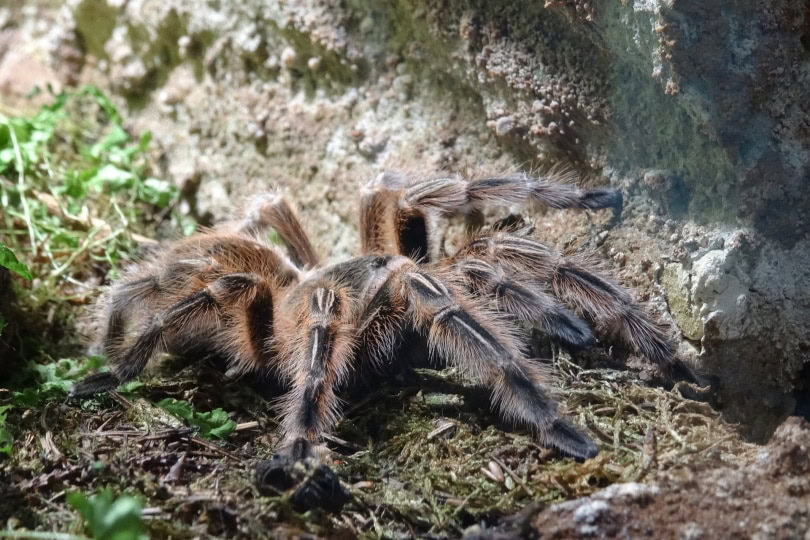
Due totheir burrowing tendencies, you will want at least 4 inches of substrate (like peat moss) at the bottom of your tank. It can stay dry, since these tarantulas are used to desert conditions. You can moisten the substrate once a week, then let it dry out.
Temperature
Keep your tarantulas at a temperature of about 68–72 degrees Fahrenheit, around the same temperature as a comfortable house. For this reason, the enclosure does not need a heat lamp. If you’re worried about your home temperature dipping below that, keep a portable heater nearby that will kick on if it gets too cold.

Do Arizona Blonde Desert Tarantulas Get Along With Other Pets?
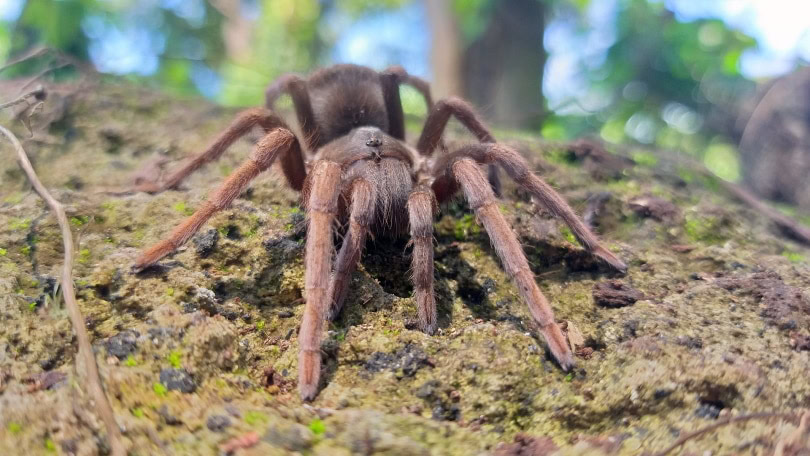
Any tarantula species should live alone, one in each habitat, unless you are trying to breed them. Arizona blondes should not be housed together because they tend to be cannibalistic; they have been known to kill and eat each other.
Tarantulas, including the Arizona blonde, are not likely to “get along” with other pets, like dogs or cats, because they are likely to see them as threats rather than playmates. This means a tarantula is likely to run away or sting when forced to interact with another animal.
What to Feed Your Arizona Blonde Desert Tarantula
Spiderlings can eat cricket legs, confused flour beetles, or pre-killed small crickets two times a week. When they get larger, you can feed them small live crickets or roaches. Juvenile tarantulas can be fed up to two medium-sized crickets per week, while adults can eat one more than that (three) per week.
Also, make sure fresh water is always available to your tarantula in a small dish.
Breeding
Most of the time, these Arizona blonde tarantulas are caught in the wild. Male Arizona blondes breed only once in their lives.
If you do choose to breed these tarantulas, you need to first make sure they are mature enough to do so. Keep in mind that this can take years to happen. Males are mature when they stop molting, but females molt for their whole lives.
Once two mature tarantulas have mated, separate the male and female immediately. When enclosed together, the female will try to eat the male after mating. When you see an egg sack form on the female, you can take it off and put it in its own tank for the eggs to hatch in.
Conclusion: Are Arizona Blonde Desert Tarantulas Suitable for You?
Tarantulas are great pets for people who want something low-maintenance, long-living, and contained within a tank. Arizona blondes also do not need any special heating element, as long as your house stays at a comfortable temperature, making them even easier to take care of. If you want something to interact with by handling often, though, an Arizona blonde may not be for you.
Featured Image Credit: Ryan M. Bolton, Shutterstock
